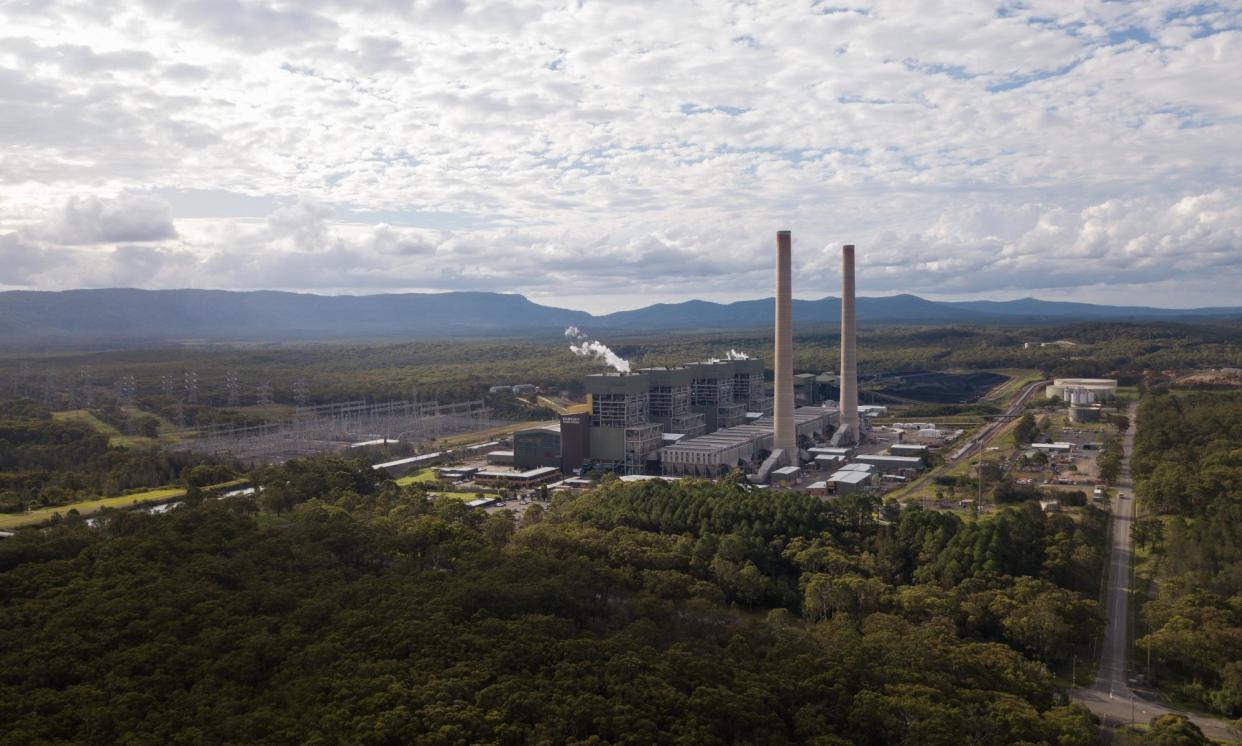Extending life of Australia’s biggest coal-fired power station is ‘deeply disappointing’, green groups say

Environmental groups say they are “deeply disappointed” by the New South Wales government’s decision to extend the life of Australia’s biggest coal-fired power station for at least two more years, saying it would have “far-reaching consequences” for investments in renewable energy.
The agreement, announced with Origin Energy on Thursday, involves NSW taxpayers potentially underwriting the 2.88-gigawatt Eraring plant to keep generating power beyond the scheduled closure date of August 2025 Origin set two years ago.
Origin agreed to keep the 40-year power station open to at least 19 August 2027 with an option to keep it running until April 2029 without additional compensation, it told the ASX this morning.
“The people of NSW now have certainty that the NSW government has a plan to ensure we have reliable energy while we transition the workforce and the economy to net zero,” the premier, Chris Minns, said.
“The best way to undermine the renewable energy transition is to have the lights go out in 2025. I’m not letting that happen.”
The government said it would not make upfront payments to Origin to operate Eraring. An underwriting arrangement – that Origin will need to opt into – would instead compensate any losses up to $225m a year for those two years.
Similarly, should Eraring turn a profit, it would pay the government 20% or no more than $40m a year.
Origin will have to supply at least 6 terawatt hours of electricity each year, or the typical output of two of its four units. There will be no penalty if it misses the goal.
It is also unclear how much extra the government might be on the hook for if significant maintenance is needed. If such costs exceed $50m and the state “chooses to reinstate” the unit needing repairs, it will have to pick up any cost beyond $40m.
Talks between Origin and the Minns Labor government began last year, spurred in part by an independent report that argued for a “temporary” extension of Eraring to “provide NSW with a buffer” to manage the risks should insufficient renewable energy and storage came online in time. Today’s deal had been anticipated.
The Australian Energy Market Operator also chimed in this week, warning the slower than expected construction of transmission lines and additional wind and solar farms would create a “reliability gap” of more than 1GW for NSW if Eraring’s closure proceeded as planned.
“This is a proactive and sensible step to ensure a plan is in place, if needed, to avoid electricity outages and rising power prices,” the energy minister, Penny Sharpe, said.
“The NSW Labor government remains entirely committed to the transition to renewable energy and our emissions reduction targets. A net zero future holds immense opportunities for our state’s economy and our environment.”
Analysts including Tim Buckley, the head of Climate Energy Finance, said the extension was “the devastating consequence of a decade of government planning failure”.
“This is essentially Coalkeeper 2.0 – yet another massive coal subsidy funded by electricity users in NSW,” Buckley said.
Stephanie Bashir, a principal at Nexa Advisory, said: “Keeping this coal plant open jeopardises our emission reduction targets and imposes unnecessary costs on energy consumers.”
“Rather than spending $450m on extending the life of an old, unreliable coal-fired power station, the NSW government should be focusing on untapped practical solutions that can quickly help address forecasted reliability gaps.”
Her group said the move was a band-aid solution that had “far-reaching implications for investor sentiment, renewable energy targets, and the energy transition overall”.
She said the move would “set up a costly and dangerous precedent” for the other three remaining coal plants, Vales Point, Bayswater and Mount Piper.
Christiaan Zuur, a policy director at the Clean Energy Council, said it would be vital that Eraring’s extension is coupled with measures to integrate new renewable generation and storage into the NSW grid.
“Renewables firmed by storage are the only option available to us to ensure that blackouts and energy price hikes are avoided.”
The Hunter Community Environment Centre, for instance, noted in a 2019 report that Eraring’s cooling systems release water into Lake Macquarie at a daily inflow rate equivalent to a one-in-40-year flood event.
Eraring was also source of many heavy metals and had contributed to a coal ash dam of more than 35m tonnes. In 2019 a local recreation area had to be abandoned because of dam safety concerns.
Tony Farrell, the deputy chief executive of Lake Macquarie city council, said Eraring and associated coalmines were a significant employer in the region, supporting many businesses directly and indirectly.
An extension of Eraring would not obviate the need to broaden the economic base of the city, Farrell said.
“We’ve got to start preparing meaningful plans” for the region beyond coal, he said.
Origin’s share price was down about 0.5% in morning trade, with rival AGL’s down 0.3%. That compared with the overall market falling about 1%.


